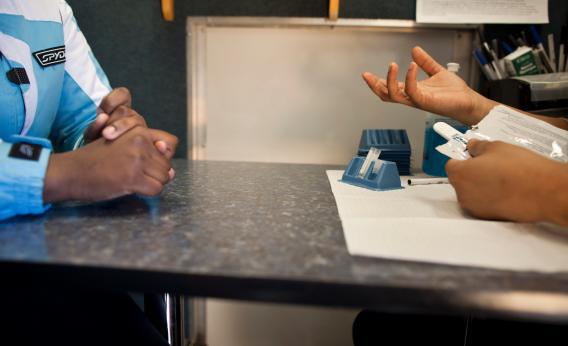Facebook takes a lot of cuss these days for having too many moms, babies, and ads. But for all the gripes and rumblings of the social network’s perceived decline, Old Blue still has a few tricks up her sleeve—like preventing the spread of HIV in at-risk populations of men.
That’s right, a new study published in the Annals of Internal Medicine shows that targeted interventions launched via Facebook group are an effective way to communicate health information, particularly in relation to HIV testing and safe sex practices.
Researchers at the David Geffen School at UCLA started by recruiting African-American and Latino men 18 years or older who had a Facebook account, lived in Los Angeles, and reported having sex with a man in the last 12 months. (According to the study, these populations have increased risk of HIV transmission in L.A. and higher than normal levels of social media use when compared with other adults.)
After some base-line screening, the men were randomly separated into four closed Facebook groups, some that would receive “intervention” communications from their peer leaders and some that would receive only information about general health from their peer leaders. In other words, some peer leaders would be looking to start conversations about HIV prevention and testing, while others would focus on exercise, diet, and how to reduce stress. In all groups, communication occurred through Facebook wall posts, messaging, and chat—though participants were not required to respond to the messages or engage with their peer leaders.
This sounds awful to me. I already have a plenty of people in my Facebook feed telling me how to eat, think, and vote, so the idea of receiving personalized messages discussing my sexual habits and/or exercise routine is positively off-putting.
And yet … the messages worked. When presented with the option to get an at-home HIV test, 44 percent of the intervention group opted-in, as opposed to just 20 percent of the control group. Furthermore, a higher percentage of the intervention group actually followed up to obtain the test results.
“There is a lot of excitement about the possibility of using technologies, big data, and mHealth to improve health outcomes and change behavior,” lead author Sean Young told me in an email. However, he says surprisingly little research has gone into actually testing such ideas. (Though, one remembers the enormously successful Facebook campaign to boost organ donor registration.) “We validated that our approach combining behavioral science and social media can create sustainable health behavior change.”
All in all, the study shows serious potential for Facebook and other social networks as venues for targeted public health information—the added bonus being that participants can always leave the group the minute things get too annoying. But the rest of the world is considerably less curmudgeon-y than I am: The study had 12-week retention rates of more than 93 percent. (Think about the last time you participated in anything for 12 straight weeks that wasn’t court-ordered.)
Or maybe I’m looking at this all wrong. Perhaps this study shows that the public has accepted Facebook as a place to be poked and prodded, and now that we’re transitioning away from phone calls and paper mail, Facebook inboxes are open game for solicitation. At least, until the next medium comes along to provide us with refuge.
